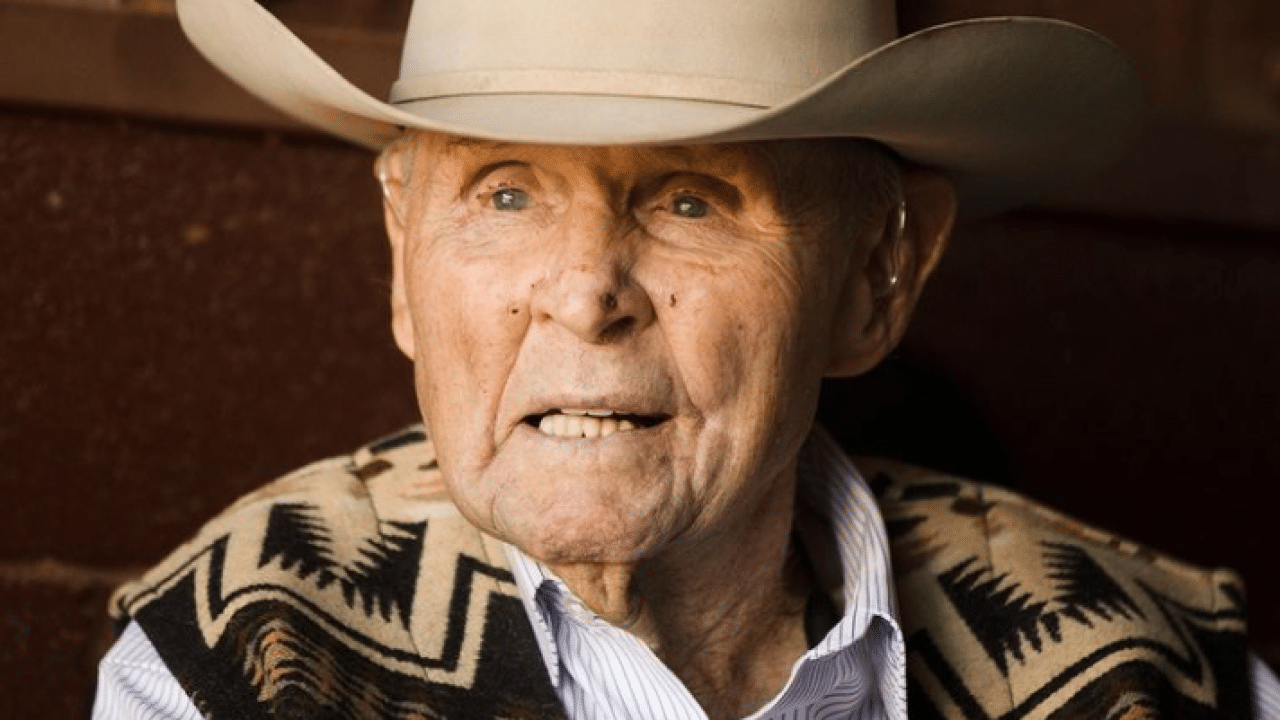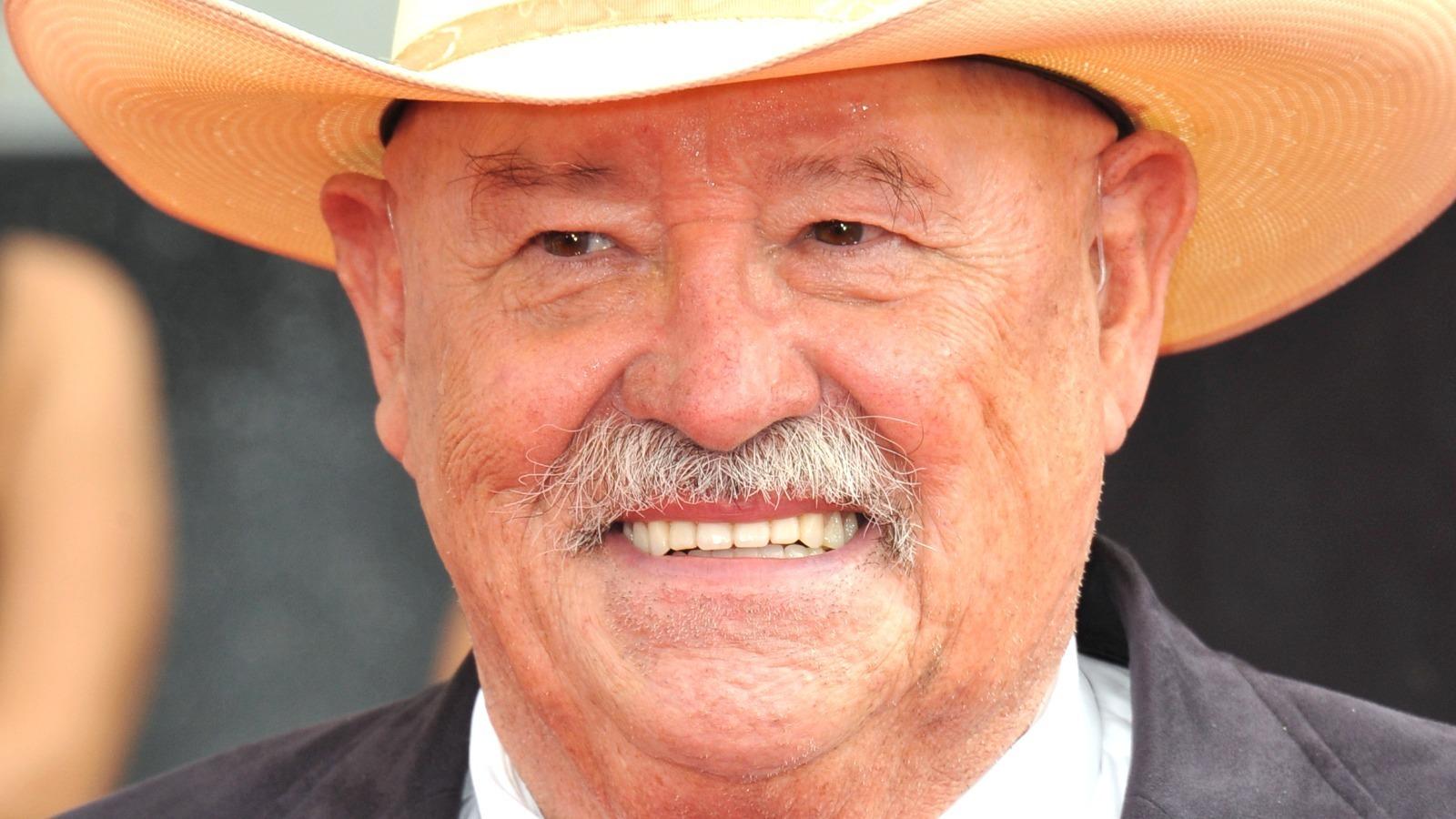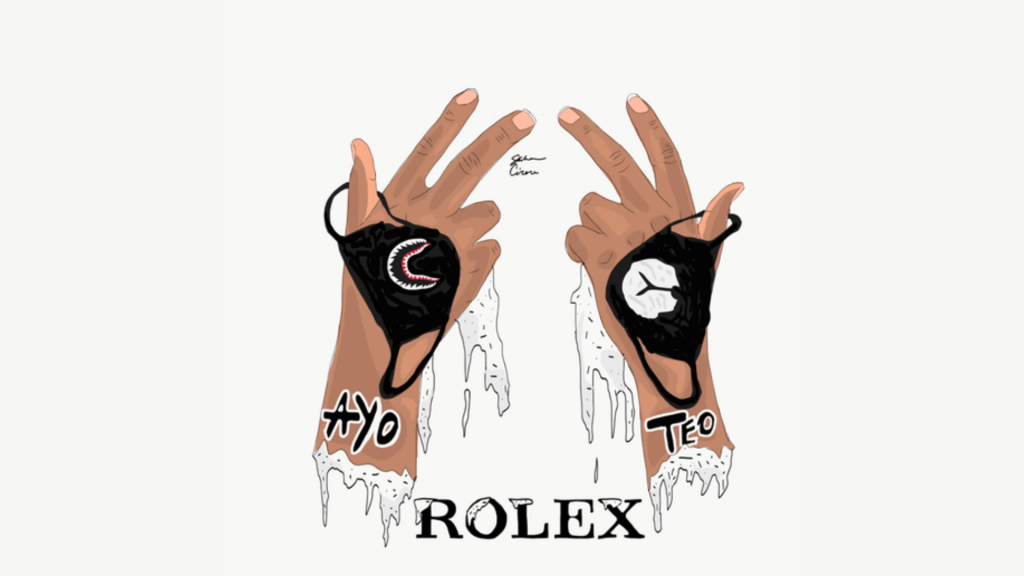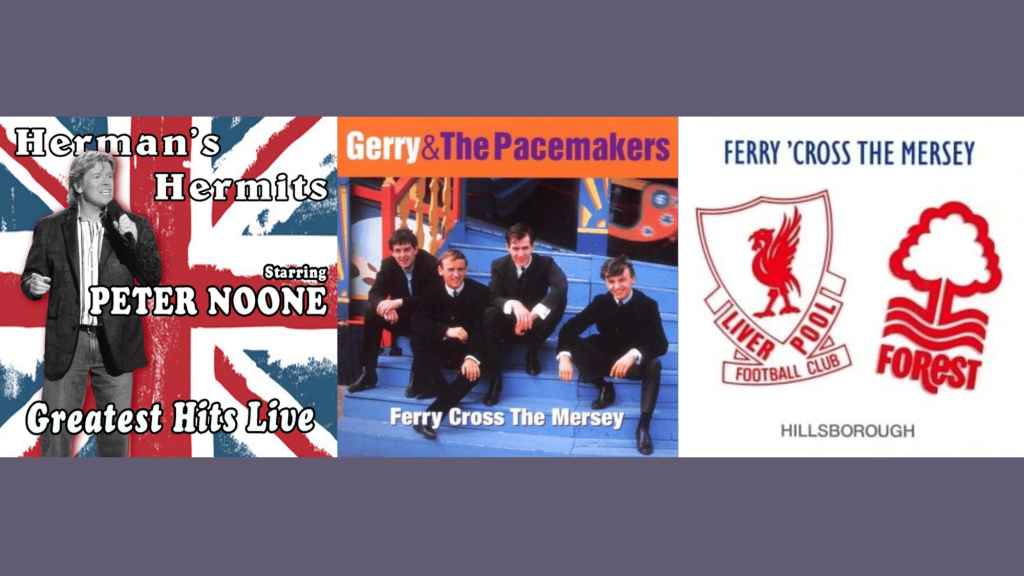Only a few names resonate as strongly as Buster Welch.
A titan in the cutting horse industry, Welch’s influence extends far beyond the competitive arena, touching every aspect of ranching and horsemanship.
His legendary status in the real world of cowboys and ranchers has now intersected with popular culture through his appearance in the hit TV series Yellowstone.
This unexpected crossover combines the authenticity of a true cowboy legend with the fictional world of the Dutton family.
Who is Buster Welch?

Buster Welch, born in 1928, is more than just a cowboy; he’s a living embodiment of the American West.
His journey from a young ranch hand to a celebrated figure in the cutting horse industry is a testament to his skill, dedication, and innate understanding of horses.
Welch’s career highlights include:
- Four-time NCHA World Champion Futurity winner
- Five-time NCHA World Champion
- NCHA Hall of Fame inductee
- American Quarter Horse Hall of Fame inductee
Born in Sterling City, Texas, Welch began his career as a ranch hand at 13. His natural affinity for horses quickly became apparent, and he soon specialized in training cutting horses.
Cutting, a Western-style equestrian competition, involves separating a single cow from a cattle herd and keeping it away for a short period.
This skill, crucial in practical cattle ranching, became a competitive sport in which Welch excelled.
Welch’s approach to horse training was revolutionary. He understood that to bring out the best in a cutting horse; one had to work with the animal’s natural instincts rather than against them.
This philosophy led to his competitive success and influenced generations of trainers who followed in his footsteps.
His most famous horse, Peppy San Badger, also known as “Little Peppy,” became a legend in his own right.
Under Welch’s guidance, Little Peppy won the NCHA Futurity in 1977 and became one of the most influential sires in the cutting horse industry.
Welch’s influence extends beyond his competitive achievements.
He has mentored countless riders and trainers, sharing his knowledge and passion for cutting horses.
His ranching and cutting community legacy is unparalleled, making him a true icon of Western heritage.
Buster Welch’s Role in Yellowstone

Buster Welch appeared in Yellowstone in Season 4, Episode 2, “Phantom Pain.”
His cameo was brief but impactful, serving as a nod to the authentic cowboy culture the show strives to represent.
In the episode, Welch appears as himself, interacting with Jimmy Hurdstrom (played by Jefferson White) at the legendary 6666 Ranch in Texas. Jimmy, sent to the ranch by John Dutton to learn true cowboy skills, encounters Welch during his stay.
The scene unfolds with Welch imparting wisdom about horsemanship and the cowboy way of life. He tells Jimmy, “You know, there’s three ways to do things: the right way, the wrong way, and the cowboy way.”
This line, delivered with the gravitas of a man who has lived the life he speaks of, encapsulates the ethos that Yellowstone aims to portray.
Welch’s interaction with Jimmy serves multiple purposes within the show’s narrative:
- It provides Jimmy with guidance from a true legend of the ranching world.
- It adds a layer of authenticity to the show’s depiction of ranch life.
- It pays homage to the real-world figures who have shaped Western culture.
While Welch’s screen time is limited, his presence looms large, offering a bridge between the fictional world of Yellowstone and the real-world ranching community it seeks to represent.
The Real Buster Welch vs. Yellowstone Portrayal
The portrayal of Buster Welch in Yellowstone is remarkably true to his real-life persona.
The creators consciously decided to feature Welch as himself rather than creating a fictional character based on him.
This choice speaks to the respect and admiration the ranching community holds for Welch.
In the show, Welch appears as he is—an older, experienced cowboy with a wealth of knowledge to share.
His demeanor, speech, and wisdom are all consistent with the real Buster Welch, known for his straightforward manner and deep understanding of horses and ranch life.
The decision to include Welch in Yellowstone serves several purposes:
- Authenticity: By featuring a real-life legend, the show bolsters its credibility among viewers familiar with the ranching world.
- Education: For viewers unfamiliar with cutting horse competition or ranching, Welch’s appearance provides a glimpse into the real figures who have shaped this culture.
- Homage: The inclusion of Welch pays respect to the generations of cowboys and horsemen who have preserved Western traditions.
- Narrative enrichment: Welch’s interaction with Jimmy adds depth to the young character’s journey and the show’s exploration of cowboy culture.
By incorporating Welch into the narrative, Yellowstone demonstrates its commitment to portraying the ranching world with as much authenticity as possible within its dramatic framework.
Impact of Buster Welch on the Ranching and Cutting Community
Buster Welch’s influence on the ranching and cutting horse community extends far beyond his competitive achievements.
His innovative approach to horse training revolutionized the industry and continues to impact how horses are trained and shown today.
Key contributions of Buster Welch include:
- Development of training techniques that work with a horse’s natural instincts
- Promotion of the cutting horse as both a competitive animal and a valuable ranch tool
- Mentorship of numerous successful trainers and riders
- Breeding programs that produced exceptional cutting horses
Welch’s philosophy emphasized the importance of understanding a horse’s mind and working harmoniously with its instincts.
This approach led to success in the competitive arena and produced more effective horses in real-world ranching situations.
His impact on the industry is reflected in the numerous awards and honors he has received, including:
- National Cutting Horse Association Riders Hall of Fame
- Texas Cowboy Hall of Fame
- National Cowboy and Western Heritage Museum Rodeo Hall of Fame
Perhaps more telling than these formal recognitions is the respect Welch commands among his peers and successors in the industry. Many of today’s top trainers and riders credit Welch as a significant career influence.
Welch’s legacy also extends to his efforts to preserve and promote Western heritage.
He has been a vocal advocate for maintaining traditional ranching practices and the cowboy way of life, even as technology and modern methods have entered the industry.
The Connection Between Yellowstone and Real Cowboys
Yellowstone‘s inclusion of Buster Welch is part of a broader effort by the show’s creators to incorporate authentic elements of ranching and cowboy culture. This commitment to authenticity is evident in various aspects of the show:
- Casting real cowboys: In addition to Welch, the show has featured other real-life cowboys and ranchers in minor roles or as extras.
- Authentic locations: Filming takes place on real ranches, including the iconic 6666 Ranch, where Welch’s scene was shot.
- Accurate portrayal of ranching practices: The show consistently depicts genuine ranching techniques and lifestyle elements.
- Consultation with experts: The production team works with ranching and rodeo experts to ensure accuracy in their portrayals.
Other real-life figures who have appeared or inspired characters on Yellowstone include:
- Forrie J. Smith, who plays Lloyd Pierce, is a real-life cowboy and rodeo competitor.
- Taylor Sheridan, the show’s creator, grew up on a ranch and incorporated his experiences into the narrative.
- Various real-life cowboys and ranch hands inspire the character of Rip Wheeler.
Including these authentic elements and personalities serves to ground the show’s dramatic storylines in a realistic context.
It also appeals to viewers familiar with ranching culture while educating those who are not.
This commitment to authenticity has been a significant factor in Yellowstone‘s success, particularly among viewers in rural and Western areas.
By respecting and accurately portraying the culture it depicts, the show has gained a loyal following among those who live the lifestyle it portrays on screen.
Conclusion
Buster Welch’s appearance in Yellowstone represents a unique convergence of legend and popular entertainment.
His brief but impactful role in the series serves as a testament to his enduring influence in the world of ranching and Western heritage.
Buster Welch’s legacy is secure, both in the real world and now in popular culture through Yellowstone.
He stands as a symbol of the enduring spirit of the American West, a testament to the skills and values that have shaped ranching culture for generations.
As Yellowstone continues to captivate audiences with its dramatic portrayal of modern ranching life, the inclusion of figures like Buster Welch reminds us of the real heroes who have shaped this world.
It’s a fitting tribute to a man who has dedicated his life to preserving and promoting the cowboy way of life, ensuring that the spirit of the West lives on, both in the competitive arena and now on the small screen.





















